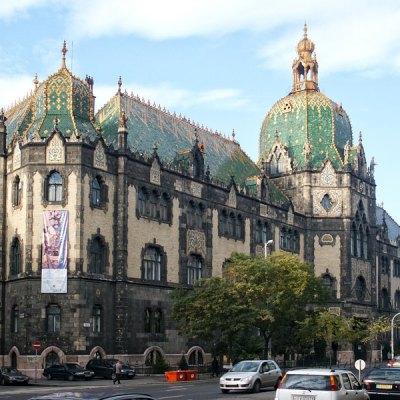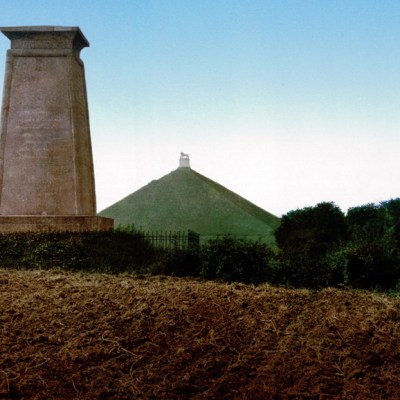From the December issue of Apollo: preview and subscribe here
Monuments tell the history of a nation. Sometimes that history can be problematic and embarrassing, and the monuments are made to suffer. They can be modified, moved, or even destroyed. This is particularly the case with the countries formerly behind the Iron Curtain: nations whose advent was a struggle, and that have had to endure tyrannies and occupations, with all the compromises that oppressions can require. Bulgaria is a case in point: an ancient nation whose modern history only began in 1878, and whose Communist government generated many monuments and statues – some banal, but many so inventive that a book has recently been devoted to them: Witnesses of Stone: Monuments & Architectures of the Red Bulgaria 1944–1989, by Nikolai Vukov and Luca Ponchiroli.
Every street, crossroads and park in Sofia, Bulgaria’s capital, seems to be enhanced by statues of heroes, ancient and modern. Happily the latest, unveiled last year, is one of Georgi Markov, the dissident writer who was murdered in London by a KGB assassin with an umbrella in 1978. Since the fall of communism in 1990, some statues, as in other former Soviet satellite states, became offensive. Those of Stalin have disappeared, as has the giant statue of Lenin which stood at the far end of the vast new square laid out in the 1950s and lined with (rather good) Stalinist buildings, now replaced by a black and gold figure of St Sofia on a tall column.
Two monuments in particular suggest Bulgaria’s ambivalent relationship with her larger Orthodox Slav neighbour. In front of the National Assembly is an equestrian figure from 1901–03 of Tsar Alexander II of Russia, high on a pedestal adorned with heroic bronze martial figures, all the work of the Italian sculptor Arnoldo Zocchi. This is sometimes called the ‘Monument to the Liberators’, as it was Russian forces that, in 1877–78, defeated the Ottomans and established the independent Bulgarian state.
Other structures in Sofia testify to the debt to Russia, not least the huge Alexander Nevsky Memorial Cathedral, begun in 1882. Not far away, in the former zoological gardens, is a more recent monument to Russian military intervention. The Red Army invaded in 1944 and established the People’s Republic, Bulgaria having (yet again) backed the losing side in the Second World War. And, as in other Eastern European cities, the Russians left behind a Monument to the Soviet Army.
The Monument to the Soviet Army, Sofia, built by a team of artists led by Danko Mitov and completed in 1954 Photo: Gavin Stamp, 2015

The one in Sofia is a fine thing, a monumental classical conception enriched with large sculptured groups in bronze, depicting Soviet soldiers and Bulgarian workers, both male and female. It was completed in 1954 and was the work of a team of artists led by Danko Mitov. Since 1990, this has not been regarded with universal affection and its removal has been proposed. Its grand formality is now disfigured by graffiti and in 2011 some of the bronze figures were painted to look like Superman and other American comic-book characters. More recently, they have been painted pink and adorned with coloured balaclavas, Pussy Riot style. This vandalism has elicited several protests from Moscow, but at least the monument has not (yet?) been moved to a less prominent site (as happened in Tallinn), or destroyed.
A wise, mature nation does not destroy its monuments. To do so is an offence against history and truth, as well as against civilisation. It is easy to understand why the communist legacy is hated by many in Bulgaria today, but monuments are best moved rather than liquidated. In fortunate, island Britain, we can barely comprehend the barbarities inflicted by Nazi Germany in Eastern Europe, nor those committed by Stalin. But as Owen Hatherley points out in his Landscapes of Communism: A History through Buildings, the Red Army may not have been liberators but they were rescuers and, ‘In this context, the least that Europe could have done after the USSR’s collapse was to leave their memorials alone.’ Besides, the Soviet Army monument in Sofia really is a magnificent work of art, good of its sort and time.
A similar contrast can be made over the treatment of the tombs of two of Bulgaria’s rulers. The first after independence was Prince Alexander of Battenberg, who was forced to abdicate in 1886. After his death in exile in 1893 he was buried in a fine domed Beaux-Arts mausoleum designed by the Swiss architect Hermann Mayer, today open to the public. Bulgaria’s first ruler after the Communist takeover was the revolutionary Georgi Dimitrov. After his sudden death in 1949 (rumoured to have been Stalin’s doing) he was buried in a dominating mausoleum placed opposite the former royal palace. Designed by Georgi Ovcharov in a stripped classical style, this rectilinear building seemed somewhat like a rather coarse version of P.L. Troost’s Nazi temples in the Königsplatz in Munich. Dimitrov’s body was removed in 1990 and buried elsewhere. After much controversy, it was decided, in 1999, to remove this prominent communist monument in a public ceremony – but this was a botched affair, as dynamite failed to destroy the structure and it was eventually demolished by more conventional means. Perhaps it would have been better, and less humiliating, to have left it standing while changing its meaning – as Ian Hamilton Finlay once argued should have been done with the elegant Munich temples.
A postcard stamp marked 1957, showing the Georgi Dimitrov mausoleum in Sofia. The building was designed by Georgi Ovcharov in 1949 and demolished in 1999

Sometimes, however, monuments disappear of their own accord. In 1981 a large, strange object celebrating 1,300 years of Bulgaria was rapidly erected – in only 8 months – to coincide with the opening of the nearby National Palace of Culture, designed by the same team led by the architect Alexander Barov. A tall, lurching, weirdly expressionist structure, possibly inspired by the Monument to the Discoveries in Lisbon, it was built of steel, concrete and marble and carried bronze figures by the sculptor Valentin Starchev. After four years, the marble cladding began to fall off, exposing the steel armature, and the monument had to be surrounded by a protective fence, leaving it as a sinister, surreal ruin, vandalised and covered in graffiti. The Sofia Municipal Council decided to remove this embarrassment, but this was challenged by the sculptor Starchev as a ‘breach of intellectual property rights’. Earlier this year the courts endorsed the decision to demolish and the monument to 1,300 years of Bulgaria will soon be a memory.
The ruined ‘1,300 Years Bulgaria’ monument in Sofia, built in 1981 and shortly to be demolished Photo: Gavin Stamp, 2015

One reason why this intriguing structure was controversial was that it replaced a war memorial on the same site that had been inaugurated by Tsar Boris III in 1934. This listed the dead of the 1st and 6th Infantry Regiments in Bulgaria’s many wars between 1885 and 1918. Placards attached to the protective railings, demanding that it be rebuilt, quoted a text: ‘The degree of civilisation of a nation is judged by its attitude towards the dead, and its culture…’ Demolishing monuments is usually a bad idea.



